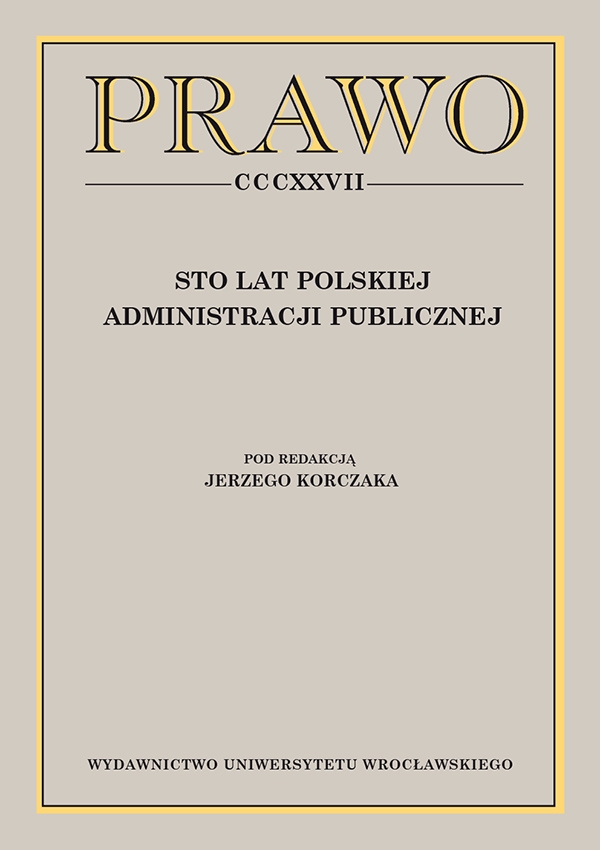

ADMINISTRACJA POLSKA

Territorial self-government in the interwar period
Among the challenges of the resurgent Polish state in 1918 was also the construction of its own public administration structure. By taking over the partitioning countries’ different models of administration and territorial self-government with diversified structure and stage of development, it was advisable to adopt an evolutionary method of creating its organizational structure. Therefore, it was based on the existing structures, well-known to local people, modifying them only towards democratization, levelling out differences and achieving certain desirable standards. Therefore, two basic stages in the construction of the territorial self-government of the Second Polish Republic can be distinguished: first, to cause the consolidation act to enter into force and the second subsequent one. And although the merger law of 1933 should be assessed positively as a step allowing for the unification of the territorial self-government structure at the level of the commune gmina and district powiat on a national scale, it was not free from defects. The territorial self-government structures at the provincial level had not been fully established. This was partly due to the lack of a coherent concept of the functioning of local self-government, its place in public administration and its role in the state. The striving for the centralization of the state apparatus after 1926 was visible not only in statutory amendments, but also in laconic regulations of the April constitution concerning local self-government. However, the effort to overcome legal disparities and the economic, cultural, population and national differences that was put into unifying and building the territorial self-government structures in 1918–1939 should be fully appreciated. The significant achievements of the Polish doctrine of the interwar period in the study of territorial self-government and the development of magazines devoted to this subject should also be mentioned.